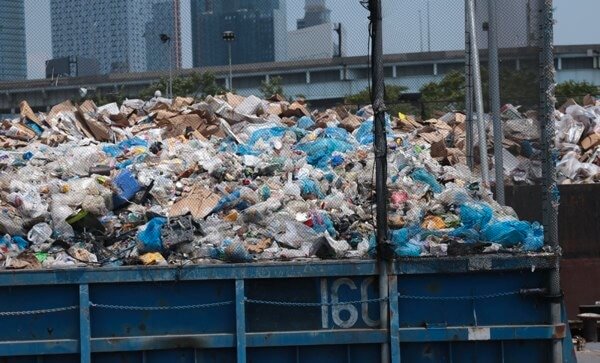By Naeisha Rose
Last week Waste Equity Bill Intro 157 passed the City Council by a vote of 32-13 with the support of environmental activists, labor groups, and overburdened communities in southeast Queens, the South Bronx and north Brooklyn. But one of the bill’s original champions when it was called Intro. 495-C had left his name off of it.
City Councilman I. Daneek Miller (D-St. Albans) was not pleased with the swift July 18 passage of Intro. 157, and while he believes waste equity is necessary, he does not believe this bill will achieve its intended goal.
“I think it is premature,” said Miller. “I don’t think it really lives up to the intent of the legislation, which was to create more equitable waste transfer.”
Intro. 495-C, the original version, failed to pass in December 2017, without support from Miller, because he was concerned about the jobs that would be lost with the limits, or caps, to be placed on the amount of garbage being stored at waste facilities in Queens.
It was reintroduced as Intro 157 on Jan. 31, according to Alex Moore, a spokesman for the Teamsters Joint Council 6.
The environmental review of the legislation, which is 144 pages long, came out July 16.
There are currently 38 waste transfer stations throughout the city and 26 are in the three overburdened communities, according to Moore. Southeast Queens has three of those stations.
The bill will cap the amount of waste in southeast Queens and the South Bronx by 33 percent and there will be a 50 percent cap on garbage in north Brooklyn, according to the legislation.
“I’m not disappointed that it passed,” said Miller, but he added “that it came to the floor and that the process itself was subverted by power politics and outside interests.”
Citywide the waste equity measure considers a community to be overburdened with waste if it has 10 percent or more of the city’s waste, but according to Miller, southeast Queens has between 4 to 6 percent of the city’s waste and is not overcapacity. The bill also has exemptions and provisions for organics processing capacity, construction and demolition debris, recyclables, barge and rail transfer.
“Community Board 12 doesn’t meet that threshold,” said Miller, questioning whether the legislation would pass the legal muster for southeast Queens.
According to Moore, southeast Queens is at 4 percent capacity and the South Bronx is at 22 percent. North Brooklyn possesses 38 percent of all the city’s waste.
Priya Mulgaonkar, a spokeswoman with the New York City Environmental Justice Alliance, was confused by Miller’s lack of support for the bill.
“His messaging aligns with the purpose of the bill, but for some reason he claims it doesn’t go far enough,” said Mulgaonkar. “He did very little to negotiate for his community – from our perspective.”
After the bill passed Miller tweeted that “addressing environmental justice requires broader vision than a focus on only waste management.”
During negotiations for the new version of the bill, the cap on garbage in southeast Queens was watered down from 50 percent to 33 percent, and Mulgaonkar believes it was because of Miller.
“That reduction wouldn’t have displaced that much waste out of the district, but it is more of a protective bill that would protect the community members [in southeast Queens] that lived next to the waste transfer stations and along the truck routes,” Mulgaonkar said. “The bill prevents them from having to deal with any more waste and prevents the expansion [of garbage] to this already overburdened community.”
Rev. Dan Rodriguez of Greater Allen A.M.E. Cathedral in Jamaica is happy about the bill passing and has qualms about Miller not supporting it.
“I’m looking forward to the waste companies using alternative methods to transfer their waste throughout the city,” said Rodriguez.
The city wants to use greener trucks to haul waste to rail stations and have garbage placed at Marine Transfer Stations instead of being moved by long-haul trucks to commercial refuse facilities, according to www.waste
“I’m hoping that none of the private waste companies’ sponsorship of the councilman outweighed the needs of the community,” said Rodriguez.
Campaign finance records show that Miller received six contributions of $2,500 in total from Royal Waste Services’ employees and family members on Sept. 19, 2017, but the councilman countered that he was also able to raise over $200,000 of non-corporate funds for his re-election last year, too.
“I’m disappointed, but I assume the councilman has his reasons for [not supporting the bill] and I believe he will voice his reasons for doing that,” said southeast Queens’ community activist Andrea Scarborough from Addisleigh Park.
Scarborough is more interested in the impact of the bill.
“I hope this means less garbage trucks,” said Scarborough. “I want to believe that environmentally we will have cleaner air with less trucks and therefore less emissions. For our community it means less asthma, less bronchitis, less COPD and less lung cancer.”
With the city now investing millions in state-of-the-art, environmentally friendly Marine Transfer Stations, a proposal that was made back in 2006, Miller believes the caps could hurt Queens from benefitting from the development of proper waste disposal.
“Folks are now looking to invest upwards of $40 to $50 million in waste facilities that are green and totally enclosed as well as having access to rail,” said Miller. He warned that the measure undermines investment in southeast Queens and the area is going to lose jobs.
As it stands right now, many community members are happy about any relief from excess waste in their neighborhoods.
“This bill was a long time coming,” Scarborough said. “July 18 was a good day.”
Reach reporter Naeisha Rose by e-mail at nrose

































